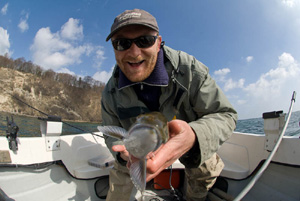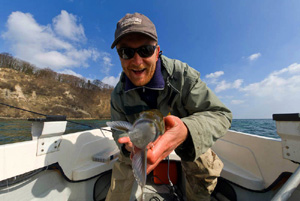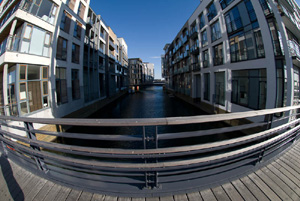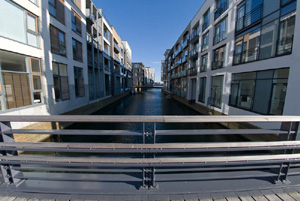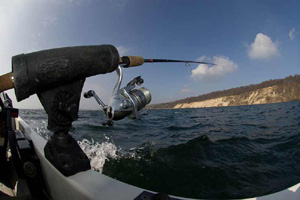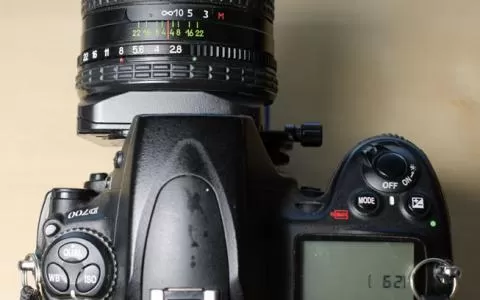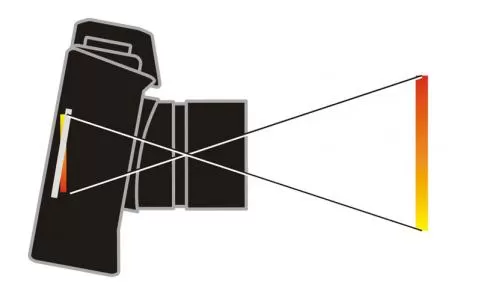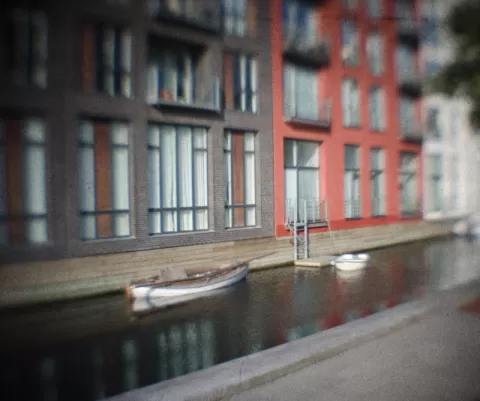I have had a couple of fisheye lenses in my long career with SLR's and have always considered them a lot of fun.

Extreme portraiture. My brother's nose and mouth is only a couple of inches from the fisheye lens
[Nikon D200, Nikkor 10.5mm f/2.8 fisheye]
[Nikon D200, Nikkor 10.5mm f/2.8 fisheye]
A fisheye picture will make a nice supplement to almost any series of pictures, but you should of course be a little conservative with these sometimes very peculiar images. Don't overuse them.
Nikon 10.5mm f/2.8
When I turned to Nikon some years ago, I soon missed my fisheye and decided to buy one. Nikon has a whole range with some really obscure and expensive lenses in there, but luckily they decided to build and market a neat little DX lens with the focal length 10.5mm and an image angle of 180 degrees diagonally.This lens is much like my Sigma 15mm for the full frame Minoltas (film), and has produced some great shots for me.
Both are compact lenses, fairly bright (f/2.8) and built like tanks. The nature of the constructions make them surprisingly small and they have a very short focusing movement, allowing for a snappy autofocus operation. They both rely on a motor in the camera body, but still focus like a blitz.
Due to the construction they also have a couple of typical traits of fisheyes: very close focusing range and an extreme depth of field.
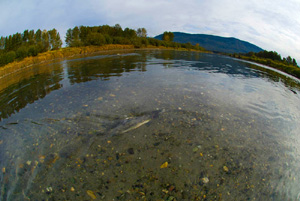
The fish in the foreground is just a foot or two away and still you have the whole landscape and the sky.
[Nikon D200, Nikkor 10.5mm f/2.8 fisheye]
[Nikon D200, Nikkor 10.5mm f/2.8 fisheye]
Bulging eyes
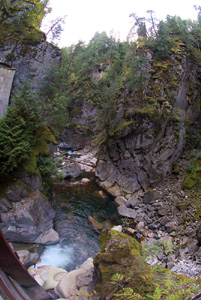
The extreme angle of view of the fisheye makes it possible to look straight down and straight up at the same time.
[Nikon D200, Nikkor 10.5mm f/2.8 fisheye]
[Nikon D200, Nikkor 10.5mm f/2.8 fisheye]
Fisheyes fall in a couple of categories: circular and full frame. The full frame in this case is not the same as in full frame sensors, but simply means that the image is not a circle as in the circular lens, but fills the sensor. This is one case where a DX lens can be full frame.
But whether the lens is full frame or circular, it will create some images, which are very different from what other lenses do, even extreme wide angles. The most predominant feature is the curving lines. While some lenses—like the Sigma 10-20mm or Nikon's own 10-24mm—will strive to be as rectilinear as possible, the fisheye does not correct for the distorted perspective of the extreme wideangle. It simply draws the world as it comes in from the 180 degrees view, and that is quite weird to look at.
Stunning and tiresome
The effect can be both stunning and tiresome. Thanks to the extreme viewing angle, you literally get everything in a fisheye image... everything! Watch out for your feet, your shadow, camera straps, tripods and anything else that might be in front of the camera. And in front in this case is simply in front of the sensor plane.But once harnessed, you can produce some amazing perspective. Thanks to the extreme depth of field, you can get things from a few inches from the lens to infinity in focus. Outdoors you will most likely both get a lot of sky and even the sun in the frame and the impression of endless vistas is easy to capture with a fisheye.
But at the same time you will get these dreaded curving lines. Any straight line that doesn't cut through the center of the picture will curve, and the closer to the edge it gets, the more it will curve. Buildings, faces, horizons and whatnot will become extremely distorted, bordering on the useless and meaningless.
Few but well placed
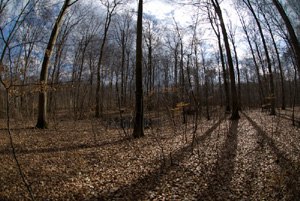
Autumn forrest showing the trait of the fisheye: curved lines
[Nikon D200, Nikkor 10.5mm f/2.8 fisheye]
[Nikon D200, Nikkor 10.5mm f/2.8 fisheye]
But for illustrating an amazing perspective, giving an impression of extreme closeness or simply having the surprising effect of the fisheye, one shot can add a freshness and a variation to a series of images.
Unlike many people I never correct my fisheye images. Many programs such as PTLens, DXO Optics or Lightroom will offer to straighten the images and in essence transform them into ordinary wideangle pictures. But first of all I didn't buy the fisheye to get straight images. I bought it to get fisheye images. And secondly the software rarely does a very good job. In stead of the obvious circular distortion, you get a strange geometric distortion, and the image quality will often suffer. Add to this that the correction mostly means cropping the image, and you kinda loose the whole idea.
If you want a straight wideangle, buy one. The Sigma 10-20mm, Sigma's 8-16mm or Nikon's own 10-24mm lenses will do a much nicer job, require less work and cost you about the same.

